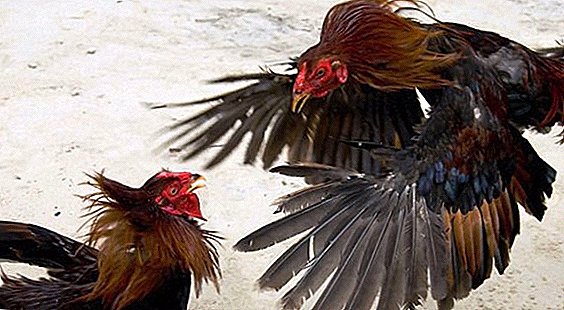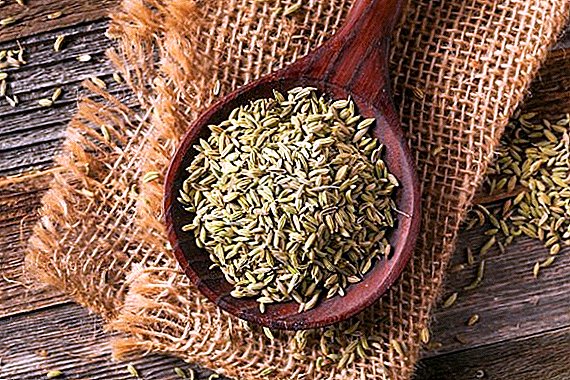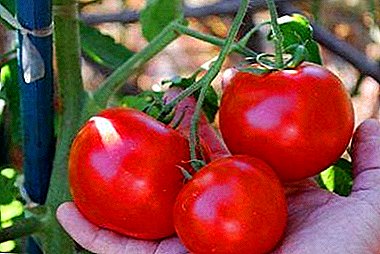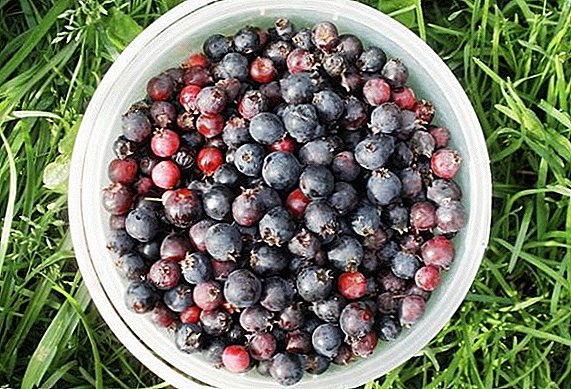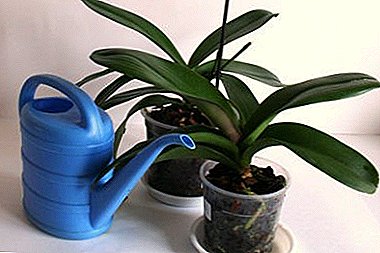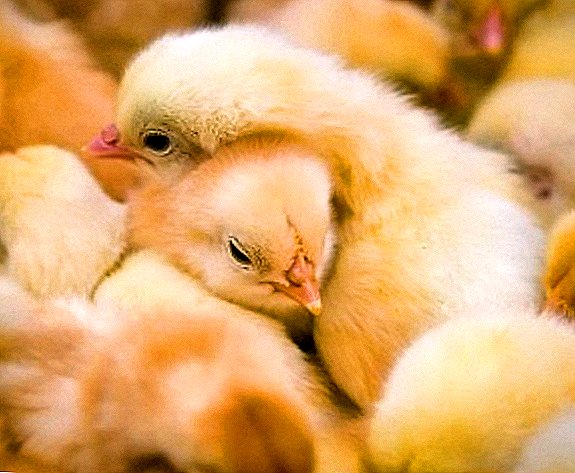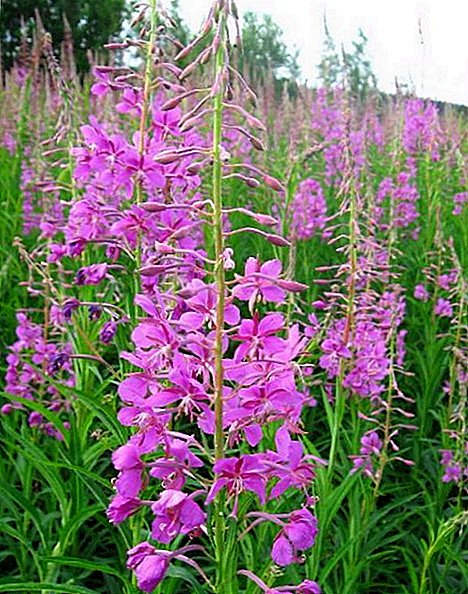 Lovage as an ornamental plant is of little interest, but as a spicy and medicinal herb has long been known. The aroma and tart taste of lovage resembles celery.
Lovage as an ornamental plant is of little interest, but as a spicy and medicinal herb has long been known. The aroma and tart taste of lovage resembles celery.
Lovage description
For what it looks like lovage, the French call it fake celery. The leaves of the plants are really similar as twins: glossy, bright green leafy plates with jagged edges divided into several parts. Lovage bush grows rapidly, growing to a half meter. At a bush strong branched stalk. Roots with many processes are collected in a loose massive lobe. In adult plants, the roots are up to 40 cm long, the root rods are brown in color. Lovage inflorescences are collected in motley yellow umbrellas. The plant blooms in July. Lovage fruits, fruits - seeds.
Depending on why you grow it, lovage can be annual or multi-year. If you are harvesting for the roots, then next year you will have to plant again. In principle, the plant is perennial and reproduces perfectly by self-sowing. 
Did you know? Lovage, like many other plants, is credited with magical properties. In Ukraine, it is customary to believe that a lovage lined up in a wedding dress will bring infinite and boundless love to a spouse, besides, it will protect the marriage from the misfortunes and quarrels of the spouses. For various holidays, the girls wove wreaths of flowers, weaving lovage leaves into them, believing that we love grass to contribute to early marriage.
What should be the conditions for growing lovage, the choice of site
Growing lovage in the open field - the process is, in general, not troublesome. The plant is resistant to cold and drought. If for some reason the plant has not been watered and there was no precipitation, even with the dried aerial part, the lovage will come to life, having received watering and further care. The plant has long and powerful roots, so it is tenacious.
 The lovage grows quickly, so it is better to plant it along the fence or the edge of the plot, so that, while growing, it does not shade other cultures. The grass can grow in the sun, not afraid of partial shade. The best place for lovage will be the south side of the plot from the side of the house.
The lovage grows quickly, so it is better to plant it along the fence or the edge of the plot, so that, while growing, it does not shade other cultures. The grass can grow in the sun, not afraid of partial shade. The best place for lovage will be the south side of the plot from the side of the house.
Before planting and growing lovage, make sure that in your chosen area the groundwater does not run close to the surface. The soil for lovage is well drained, moderately moist and nutritious.
Important! A strong stagnation of moisture, the close location of groundwater, excessive watering, will lead to decay of the root system of the plant.
Lighting on the site
Lovage to lighting is not pretentious, it is well tolerated by the shadow, but it is better to find a compromise - light shading. The sun is necessary for the plant when the fruit is tied with the seeds. Lovage seems to be pulled out to the sun in order to feed the seeds with heat and light.
Humidity and temperature required for lovage
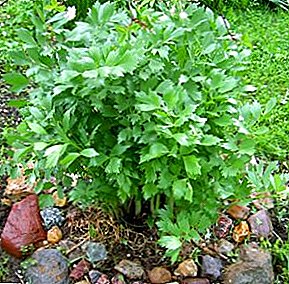 Lovage prevents excessive moisture and acidity of the soil. Before planting, be sure to prepare the plot, feed and “deoxidize”, if necessary. During the growing season, lovage needs abundant watering - 15 liters of water, but once a week.
Lovage prevents excessive moisture and acidity of the soil. Before planting, be sure to prepare the plot, feed and “deoxidize”, if necessary. During the growing season, lovage needs abundant watering - 15 liters of water, but once a week.
Cultivation of lovage from seeds successfully takes place at a temperature of +3 ° C. True, the germination time is stretched for three weeks. At a temperature of 18 ° C, this period is reduced to ten days.
How to plant a lovage in the country
Lovage loves the free space around him, so it is planted at a distance of 60 cm from each other, the row spacing is 70 cm.
Preparing the soil for planting
Lovage with proper planting and timely care will give a bountiful harvest. Before planting the plants need to prepare the soil. To do this, during the autumn digging, a bucket of peat and humus, 200 g of wood ash and 20 g of nitrophoska (per square meter) are introduced into the soil.
Immediately before planting, the soil is fertilized with superphosphate, potassium sulfate, urea and ash.
Interesting! In many languages, the name "lovage" has one root with the word "love." In Russian - love-grass, in English - "lovage" (love - love), in German "Liebstok" (liebe - love).
Growing lovage from seed
 In April, when the soil is well warmed, it is best to sow the lovage in the open ground with seeds. In early March, seeds are sown in seedling boxes in a universal soil for herbaceous plants. The grown shoots are transplanted into the open ground at the end of April at a distance of one meter from each other.
In April, when the soil is well warmed, it is best to sow the lovage in the open ground with seeds. In early March, seeds are sown in seedling boxes in a universal soil for herbaceous plants. The grown shoots are transplanted into the open ground at the end of April at a distance of one meter from each other.
How to plant a lovage seed immediately in open ground? The scheme is as follows: the furrows are shallow, up to 2 cm, the distance between crops is up to 10 cm. In two weeks, the seedlings will germinate, they need to be thinned. When the bushes begin to grow, spread them out at a distance of 70 cm - 1 m from each other.
Reproduction lovage cuttings
To propagate by cuttings, cut a strong shoot from a lovage with a pair of leaves and plant them in a box filled with wet sand. Both the plant itself and the root system develop quickly, in two weeks the cutting can be transplanted to a permanent place.
How to grow lovage by dividing the bush
Lovage is grown and the method of dividing the bush, care is the same as in seed cultivation. Bushes are dividing at the end of spring. To do this, dig a bush of three years of age. The bush is divided into several parts, each of which must have at least three strong root buds and shoots. Delenki planted in the prepared place, watered. The optimal term of life and good fruiting lovage - six years.
What you need to know about caring for lovable
 Lovage - not a capricious plant: and growing, and care are not associated with any difficulties. The plant needs abundant watering in the absence of rain, weeding and loosening the soil, pruning leaves in the second year of life and feeding.
Lovage - not a capricious plant: and growing, and care are not associated with any difficulties. The plant needs abundant watering in the absence of rain, weeding and loosening the soil, pruning leaves in the second year of life and feeding.
You can feed the plant with bird droppings, extract of mullein, mineral composition. Nitrogen is needed during the growth period, and phosphorus and potassium in the future. For the development of a strong root system in lovage remove flowers. Here, too, do not overdo it: a few flower stalks should be left.
Attention! Flowers plants attract beneficial insects that destroy pests.
When to harvest lovage
 Lovage harvest harvested throughout the summer season. If you grow lovids for the sake of leaves, do not leave many flower stalks on the plant. Lovage leaves can be collected as needed for salads. From the bushes that are grown for the seeds, the leaves are not desirable to cut. The collection of plant roots is carried out in the fall, carefully digging and cleaning them from the ground. The roots of the plant are washed, dried, crushed and stored in a glass container.
Lovage harvest harvested throughout the summer season. If you grow lovids for the sake of leaves, do not leave many flower stalks on the plant. Lovage leaves can be collected as needed for salads. From the bushes that are grown for the seeds, the leaves are not desirable to cut. The collection of plant roots is carried out in the fall, carefully digging and cleaning them from the ground. The roots of the plant are washed, dried, crushed and stored in a glass container.
For harvesting leaves and stems they are cut at the root. The crop can be dried or frozen for the winter. Dry blanks are stored in a dry glass jar in a dark place.
Lovage is a multifaceted plant: it is eaten as a spice, used in traditional medicine, in cosmetology. In the summer, lovage helps keep blood-sucking insects away from home: hang a few tufts of grass on the eaves and your sleep will not be disturbed by a nasty buzz over your ear.



